For the past twelve years, I have worked on numerous music recording shoots. And more specifically on Super 35 recording shoots, which is now common but was not yet so in the early 2010s.
This naturally led me to make extensive use of many multifocal lenses, and often those with focal ranges having a large amplitude.
Zoom S35 vs Box Lens
In spherical lenses, the Angénieux 24-290mm x12 zoom was often on the list (before the arrival of the 36-435mm) but also the Fujinon Cabrio ZK 19-90mm, 25-300mm and 85-300mm (with dedicated motorization modules!), from Canon the 30-300mm and the indispensable 17-120mm (from this same manufacturer we note the existence of the 50-1000, but it did not convince me, the optics lacking precision in my opinion from 500-600mm). 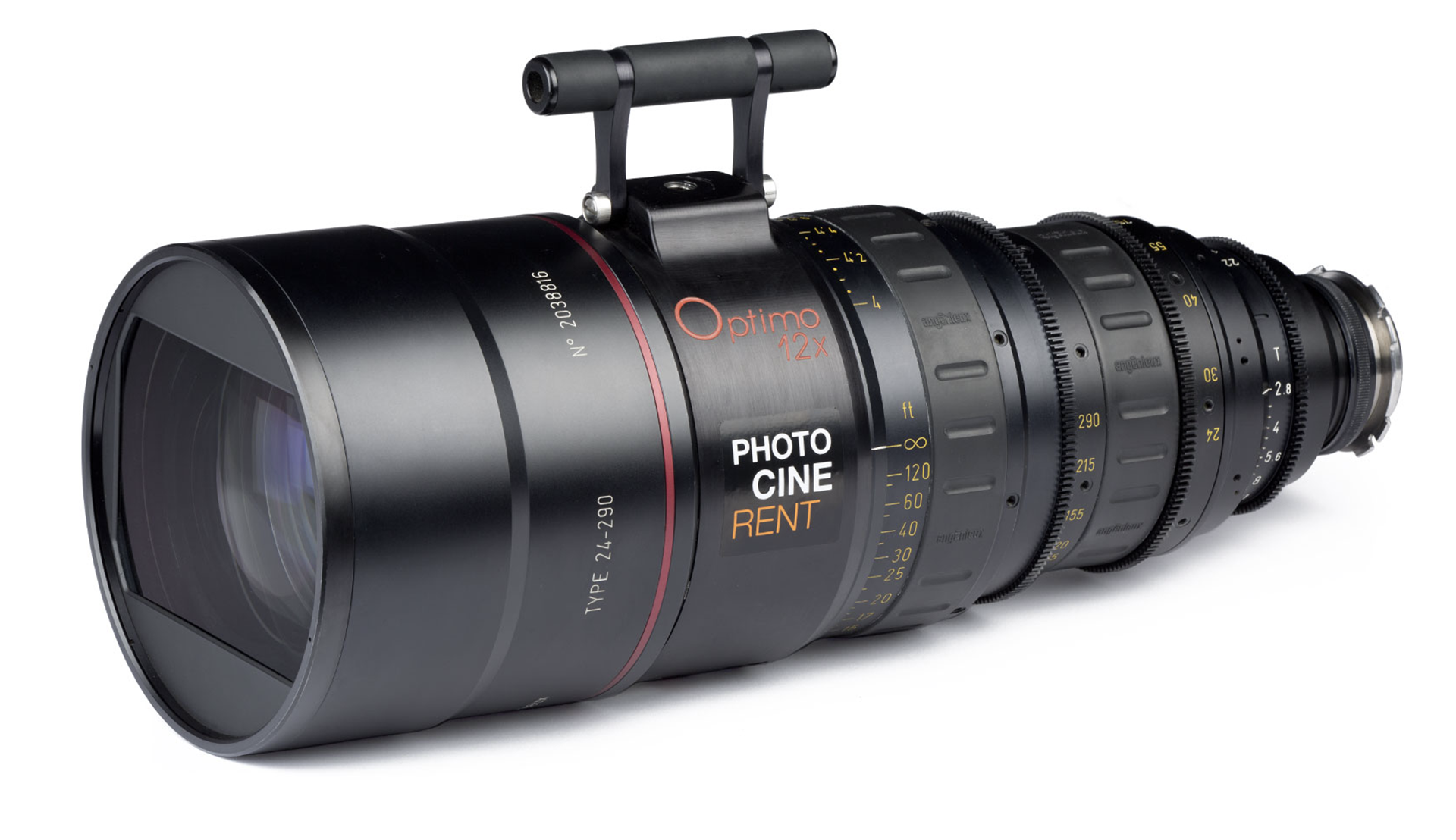

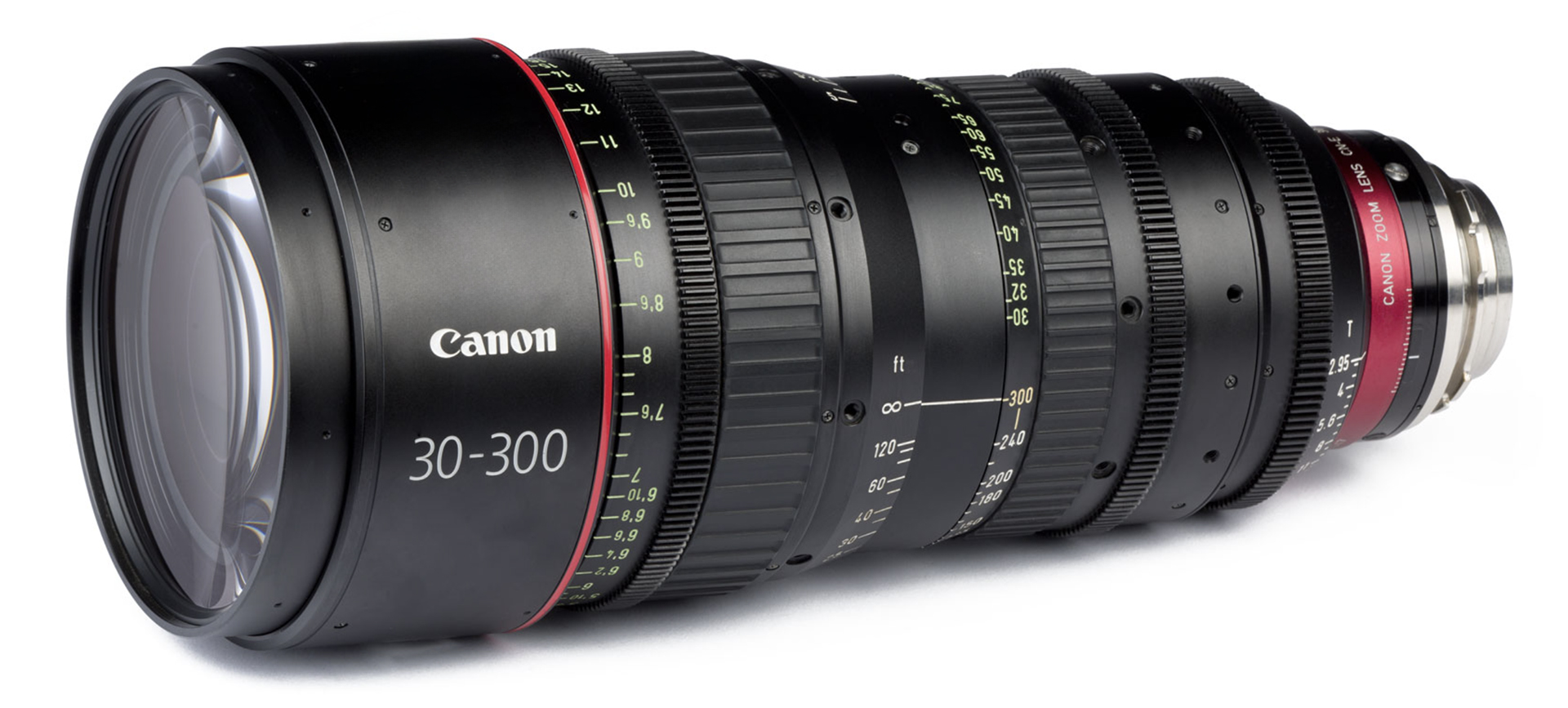 At Panavision I really liked the elegant rusticity of the 135-420mm, I also happened to come across a very rare Panavision Lightweight zoom III 85-200mm… probably a Nikon lens “Panavisioned”.
At Panavision I really liked the elegant rusticity of the 135-420mm, I also happened to come across a very rare Panavision Lightweight zoom III 85-200mm… probably a Nikon lens “Panavisioned”.

Panavision 135-420mm
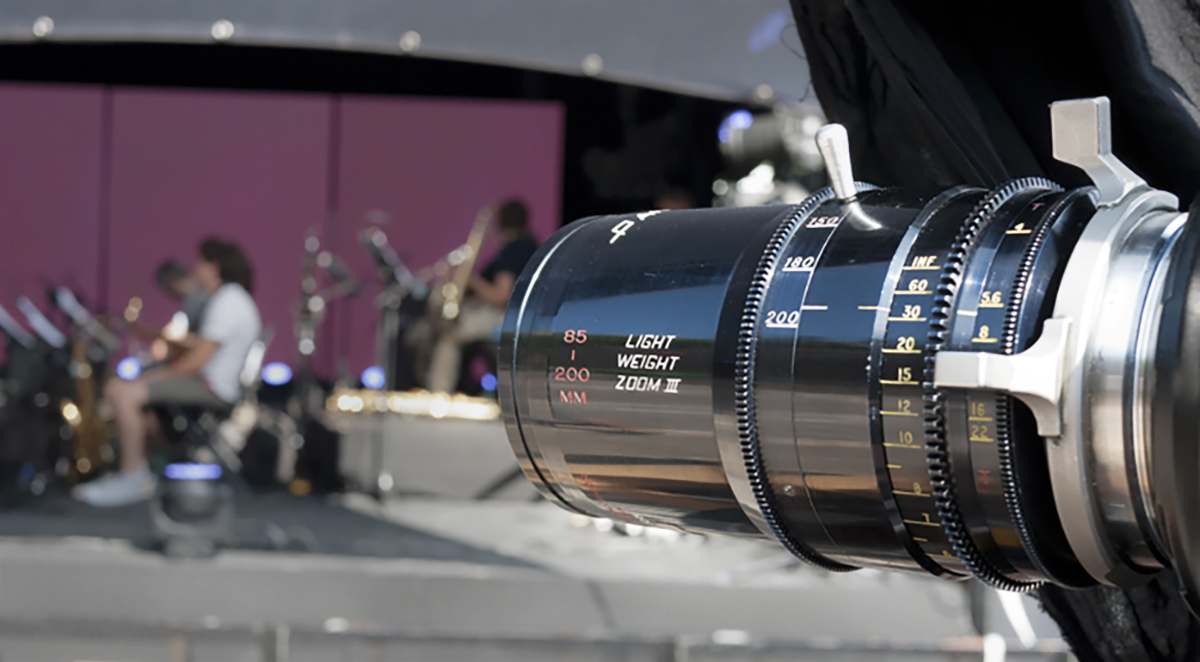
Panavision 85-200mm
Not to mention the numerous photo zooms, rarely parfocal but often lightweight and undeniably very effective, in many multi-camera setups. I’m thinking in particular of the classic Canon 70-200mm, or even the 100-400mm, but also, to some extent, the 200-400mm (though it’s heavier and bulkier). Anamorphic lenses offer a more limited selection, of course; I’ve only ever had the Angénieux 44-440mm to try out.
I also once worked with a very unusual lens: a Canon FD 150-600mm zoom lens with a PL mount (rented from a Berlin company during a shoot in Germany). In France, I found this rather rare lens, notably at TSF, either as an Optex adaptation or as a completely re-cased lens under the Century brand.
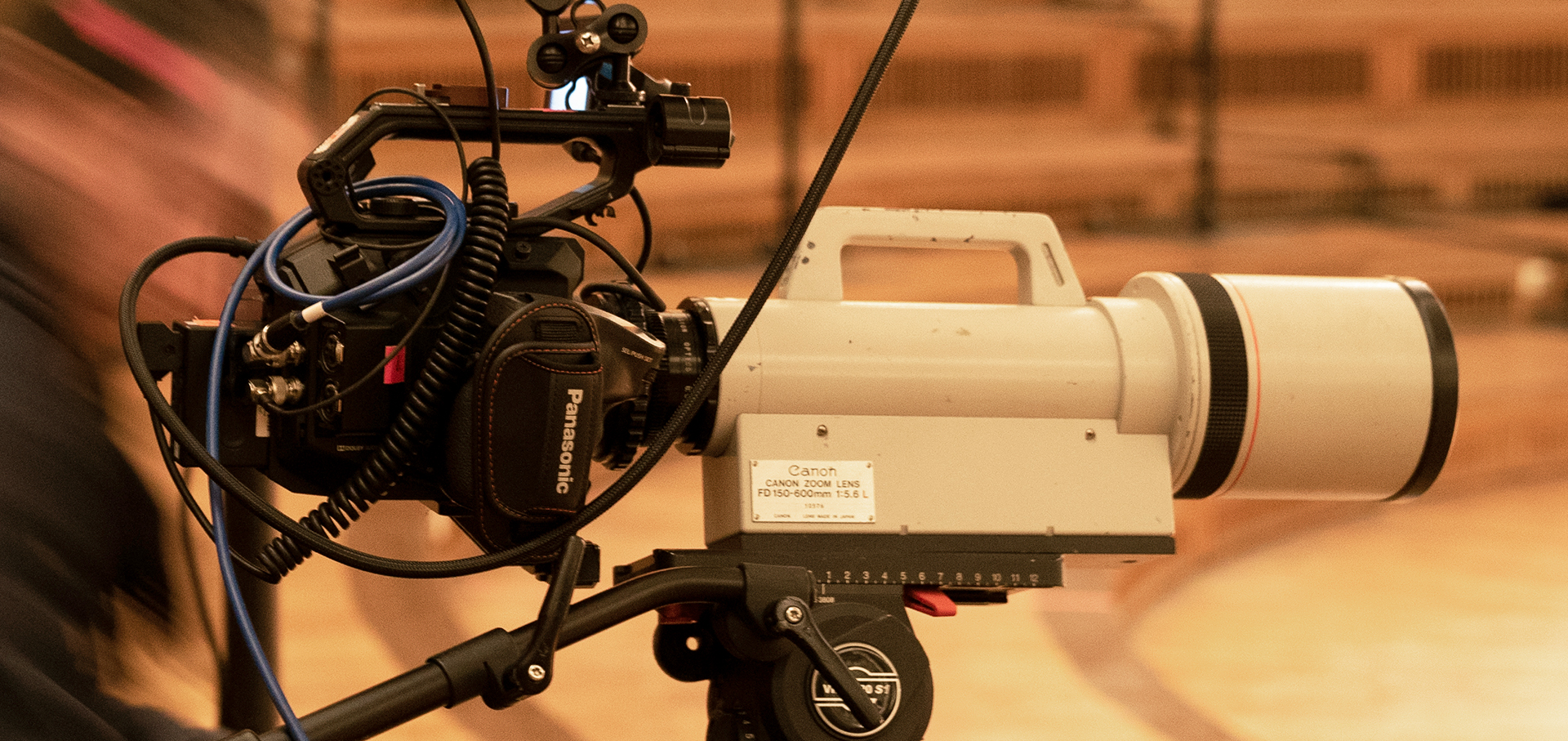
Canon 150-600mm
When discussing zoom lenses with a wide focal range and a large zoom range, 2/3″ zooms are the most common, with impressive magnification ratios such as 80x (9-720mm) or even 125x (8-1000mm). These are used for filming sporting events or live performances via OB vans, and generally for television programs. These “box zoom” lenses integrate the lens, focus, aperture, and zoom motors, along with all the necessary connections, into a single unit. There’s a world of difference between box zooms and our S35 and FF lenses, designed specifically for the demands of film sets.
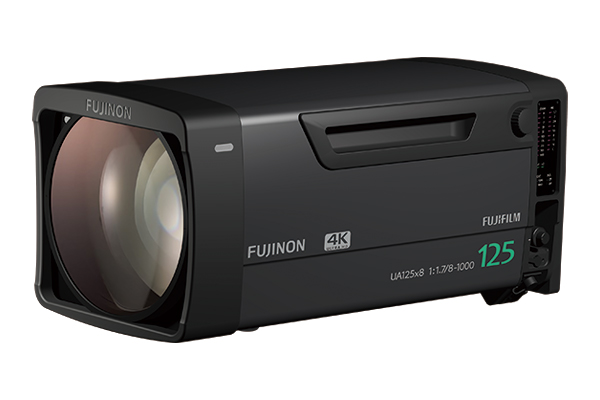 The growing demand for very high-quality images and versatile optics was nevertheless becoming increasingly apparent in order to meet the requirements of large-scale events…
The growing demand for very high-quality images and versatile optics was nevertheless becoming increasingly apparent in order to meet the requirements of large-scale events…
…and Fujinon manufactured the Duvo HZK 25-1000mm zoom lens!
With such a wide range, Fujinon has developed a unique stabilization and breathing compensation system, and to achieve such extreme performance, the manufacturer had to create a lens (almost) from scratch. Quite unusually, Fujinon designed this lens in close collaboration with one of its clients, the rental company PhotoCineRent , a partner of the Catholic University of the West (UCO), specifically its founder and director, Albrecht Gerlach. PhotoCineLive, PhotoCineRent’s video capture division, has become a leading provider in recent years with a substantial camera fleet (around sixty Venice and Venice 2 cameras!) and the lenses to match. It’s no surprise to find PhotoCineRent/PhotoCineLive equipment and teams at Fashion Weeks and major music events. In discussions with cinematographers, Albrecht is a knowledgeable partner who knows how to find solutions, but with increasingly large filming locations, the need for a very wide-angle lens capable of covering both Super 35mm and full-frame sensors became apparent. This idea is shared by several rental companies in the United States, a country well aware of the challenges posed by venues hosting large events.
To discuss the design and reasons for this particular zoom lens, there’s nothing better than a discussion with Albrecht, Gilles Ginestet, director of the optical department at Fujifilm France and Ryota Numayama, sales and marketing director for Fujifilm Europe.
In the aftermath of the Covid-19 pandemic, during the first live “test” concert with a masked audience featuring Indochine at the Accor Arena in Bercy, Paris, in May 2021, PhotoCineLive provided the technical resources, and Albrecht decided to use a Fujinon SK20x35-ESM 35-700mm zoom lens for the occasion. This PL zoom, released in 2020, is very rare, designed specifically for the Japanese market and the technical requirements of Japanese public television, NHK, which has been broadcasting in 4K and 8K since December 2018. The lens, with a T1:2.8mm aperture from 35 to 315mm and a T4.8 aperture at 700mm, can be extended to 980mm with a 1.4x teleconverter. In fact, all 10 copies of this zoom box are based in Japan, but to get close-up shots of Nicola Sirkis, the singer of Indochine, that was necessary!
 The following year, at the same venue for the Kendrick Lamar concert, the 35-700mm lens wasn’t available, so Albrecht suggested using a different box lens, the Fujinon UA107x8.4BESM, which boasts an impressive range of 8.4mm to 900mm and 16.8-1800mm with a 2x teleconverter. An incredibly long focal length, but a compromise in quality, as the 2/3″ lens required a PL-B4 adapter and resulted in a considerable loss of aperture. A bit of a shame, considering the Venice’s full-frame sensor.
The following year, at the same venue for the Kendrick Lamar concert, the 35-700mm lens wasn’t available, so Albrecht suggested using a different box lens, the Fujinon UA107x8.4BESM, which boasts an impressive range of 8.4mm to 900mm and 16.8-1800mm with a 2x teleconverter. An incredibly long focal length, but a compromise in quality, as the 2/3″ lens required a PL-B4 adapter and resulted in a considerable loss of aperture. A bit of a shame, considering the Venice’s full-frame sensor.
Subsequently, leveraging his contacts with Fujinon, Albrecht approached the manufacturer directly to propose designing a zoom lens with a greater zoom range. Ryota Numayama explained to me that it wasn’t technically feasible for Fujifilm to start with the SK20x35-ESM, primarily for economic reasons given the quality of the glass used to manufacture that lens: exceeding the focal length coverage of the 35-700mm, of which only about ten examples existed, required designing a completely new lens. The question of the commercial viability of such a specific product also arose: a zoom lens with a very wide zoom range covering Super 35mm and full-frame, in a PL mount. On this point, Albrecht was, of course, a key player, and it was quite possible that other rental companies and service providers worldwide would be interested, as the demand for lenses dedicated to large sensors was more relevant than ever.
Fujifilm decided to take up the challenge and so began a year and a half of development!
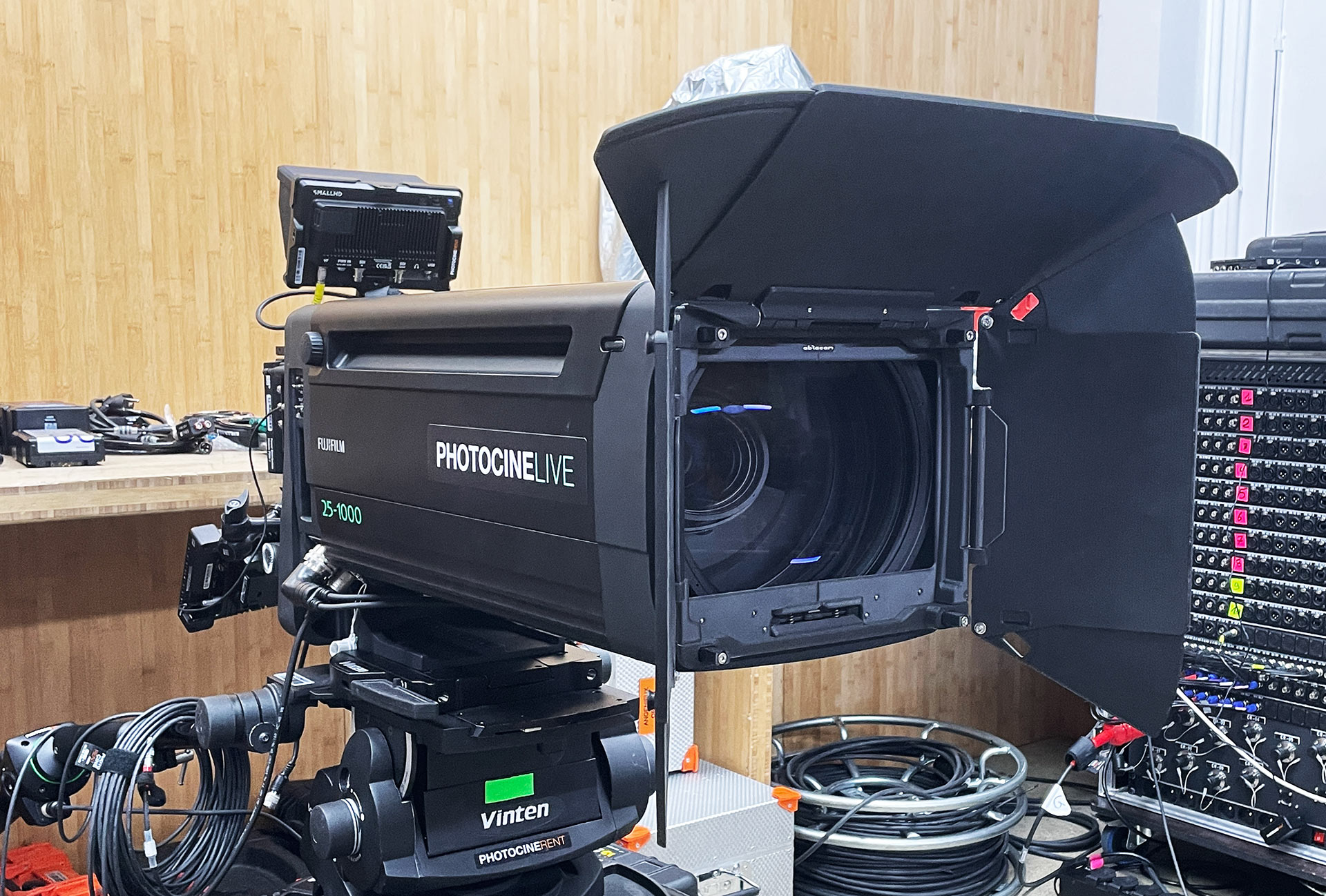
A hybrid zoom
Upon arrival, the Duvo 25-1000 is the world’s most zoom-capable 40x lens, boasting a record-breaking 1000mm focal length. It incorporates a dedicated optical stabilization mechanism and breath compensation, covering both Super 35mm and full-frame cameras (though with a slight limitation at the very beginning of the zoom range!). With the 1.5x extender, the 25-1000mm equivalent focal length becomes 37.5-1500mm, with the aperture increasing from T2.8 at 25-465mm to T5.5 at 1000mm.
Fujifilm thus developed a unique hybrid zoom lens, a cinematic lens in a broadcast zoom body, a lens for filming music and other major events with the requirement of a cinematic image. What rarely happens in sports inevitably happens in music… Albrecht anticipated the demands of cinematographers by asking Abracam to design a specific matte box, 9″ x 6.6″. He also proposed to Tiffen the development of a series of Glimmer Glass filters and a series of Black Satin filters, and to Schneider Optics a polarizing filter as well as a series of Hollywood Black Magic filters.
 Similarly, and for optimal control, it is possible to point the camera using an Arri Hi-5 remote, wired via an RIA-1 and an LCUB2. Aperture can be controlled via the Hi-5 remote or via an RCP connected to the camera (compatible with Sony/Arri/Panasonic).
Similarly, and for optimal control, it is possible to point the camera using an Arri Hi-5 remote, wired via an RIA-1 and an LCUB2. Aperture can be controlled via the Hi-5 remote or via an RCP connected to the camera (compatible with Sony/Arri/Panasonic).  Today, between forty and fifty Duvos are available worldwide, of which between 15 and 20 are available for rent in the USA and about twenty in Europe.
Today, between forty and fifty Duvos are available worldwide, of which between 15 and 20 are available for rent in the USA and about twenty in Europe.
PhotoCineRent owns 8 of them, making it the best-equipped rental company in the world with Duvo 25-1000s!
Thanks to PhotoCineRent, Albrecht Gerlach and Neticia Alberto, Gilles Ginestet and Ryota Numayama



